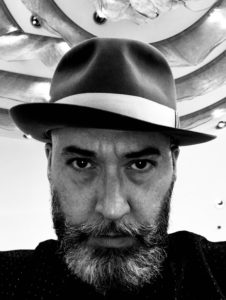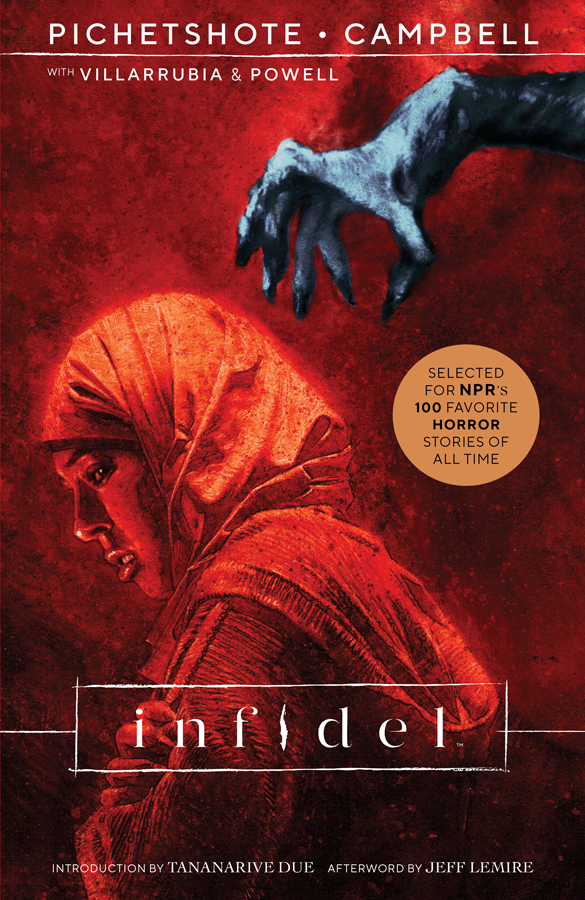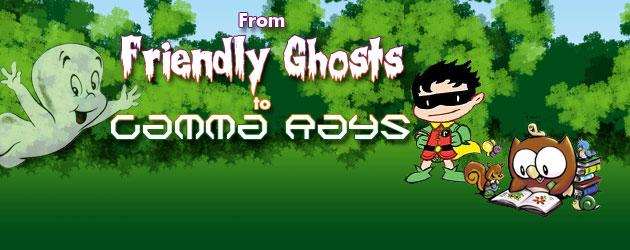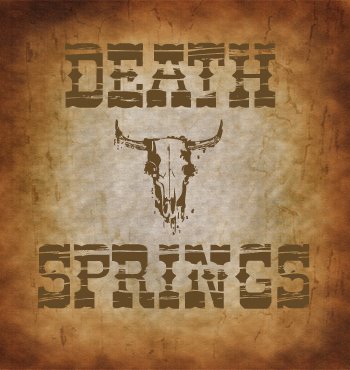At NYCC 2018 I had an opportunity to sit down with the creative team behind Image’s Infidel following the release of the trade paperback. The groundbreaking horror tale revolves around a Muslim family living in a recently bombed apartment building on Manhattan’s lower east side. Infidel has been hailed as a timely examination of how our everyday fears and biases can manifest adversely in our daily interactions. Below, Pichetshote and Campbell offered a very candid glimpse into the process that brought the world of Infidel to life.
ComicAttack: Good morning guys. Just for the record, would you mind stating your names and your roles on Infidel?
Pornsak Pichetshote: Sure, I’m Pornsak Pichetshote. I’m the writer.
Aaron Campbell: I’m Aaron Campbell, I’m the artist.
CA: Now for the members of the ComicAttack audience that might not be familiar with your work, what previous experience do you guys have that you feel best exemplifies your contribution to comics? Like, what work are you most proud of that you’ve done?
PP: Well I, for about seven years, I was a comic editor at Vertigo. So I worked on books like Losers, Human Target, Unwritten, Unknown Soldier, Sweet Tooth, Daytripper. And then after that, I spent about four and a half years as a… I started and then oversaw DC’s T.V. department where I worked on shows like Arrow, Flash, iZombie and Gotham, and Constantine. So all of that-
CA: Is pretty extensive.
PP: Yeah yeah, I did a bunch of stuff. So it’s hard to pick out one thing that I really like, but yeah, it’s a bunch of stuff… That’s the stuff that I worked on. And then I worked on comics in different capacities, but this is my first book as like from a writer[sic].
AC: For me it’s like, Infidel is what I’m most proud of at this point. It’s completely changed the trajectory of my career. It’s refocused my work to horror, which was always my passion, to begin with. Prior to that, I worked on books like Shadow with Garth Ennis, Green Hornet: Year One with Matt Wagner, Uncanny with Andy Diggle, who wrote Losers. The last thing I did before Infidel was a James Bond book called Felix Leiter that was written by James Robinson. So I’ve done a lot of stuff that I’m really proud of because I’ve always been able to work with incredible creative teams. So, and that’s just been sort of the lesson of my career that I’ve just been very lucky to always have worked with great, great creators. Even from the very first book I ever worked on, Sherlock Holmes with Leah Moore and John Reppion, who are incredible writers too, so yeah.
CA: My next question would be how this team came together. How did you guys come together to work on Infidel?
PP: So, Jose Villarubbia was really Instrumental in that. Me and Jose, for anyone that doesn’t know, he’s like one of the legendary colorists in comics. He’s got immaculate artistic taste. And back when I was editor, I used to call up Jose because we were friends and be like, “Hey, I just got this new book greenlit and this is who I think should be the artist, and who do you think should be the artist?” Because Jose knows everybody and he has a great like, vocabulary of comic book artists. So when I was putting this book together I called Jose because it was a chance to talk to a friend and I said, “Are you thinking what I’m thinking?” And Jose kind of flipped it on me, and was like, “Listen, as you know, I’m a frustrated editor. I would love to edit this.” And I’m like, “That sounds like an amazing idea, Let’s totally do that.” And so that’s how that partnership happened. And Jose was the one who had noted Aaron. It was a weird relationship where Aaron was a student in the school that Jose taught [sic] but not actually one of Jose’s students. And I think Aaron could probably tell it from here.
AC: Yeah, I went to the Maryland Institute College of Art in the late ’90s. The same time Jose was beginning his comics career and his teaching career. So we all knew Jose from the work that he was doing in collaboration with Stephen John Phillips on this graphic novel called Veils that Vertigo was doing at the time. And so he became sort of a little hidden gem superstar within the school. So he would come in and talk to our class and we all adored Jose. And over the years after graduation, I kept in contact and we became friends and for years and years, I kept trying to push his name at Dynamite, where I was doing the majority of my work, to get him to color. But, they couldn’t afford Jose so this was the perfect opportunity. Jose had been, I guess thinking about me for a while, and he just contacted me out of the blue through social media and asked me if I’d be interested, and I was like, “ Absolutely!” So, and then the rest is history.

CA: In working on a horror book in particular, do you feel like it puts you in a particular kind of headspace that doesn’t really match up with any other genre? Or is it really a similar process all around?
PP: (To Aaron) I mean, you’ve worked in more genres than I have.
AC: It’s very different. It’s one of the reasons why I’ve been able to change the way that I work. You know, before I was doing stuff that was kind of plain-clothed superheroes and pulp and there’s not a lot of room for experimentation because it doesn’t really make sense to experiment stylistically in those genres when there’s not a really dense psychological element to the story being told. But in horror so much of it is about psychology, so much is about the theater of the mind. So it allows you to really play with your technique and your process and do weird stuff that would not make sense otherwise. I mean like, I can think of some superhe- like Swamp Thing, absolutely I think it would function, but Swamp thing is horror again. It.. but it kind of blends through genres. But in pure horror you can do pretty much anything you want and make it connect to the subject matter and to the audience and then through that twisting of the medium, it also helps twist the story even further into the realm where Pornsak’s trying to take it. So that’s my take.
PP: Yeah, I mean, it’s tricky for me to say because I, as a writer… I grew up on a lot of different genres as an editor, but not so much as a writer since I’m kind of just starting that portion of my career. So I would say that a lot of stuff I do is very grounded, very political, and that tends to run the depressing side of the spectrum. And so that particular stuff, especially the politics side of it, it takes a very specific headspace to kind of get into. You have to mire yourself in it a lot. But I don’t know if that’s necessarily the horror of it as opposed to my moral trump card, which tends to be very grounded.
CA: And that’s something I noticed about the book in general, that it’s very grounded. The depiction and the focus on family and on close relationships. The art, just very, very grounded and there’s a realism that permeates on every level. Going back to the art, what do you think is the most important about the way that you’ve approached the art? Is it more to have it recognizable, to have that realism there, or do you really feel like the chances that you’re willing to take do more for getting people to “get” the story?
AC: I think it has to be unified across the spectrum. Because horror requires you, probably more than any other genre, to connect and empathize with the characters, and if you’re going to connect and empathize you have to believe them. So for me, my part, I just feel that in those… When you’re in the real world with those people, trying to get inside their head and understand their plight and their emotions and what they’re thinking you need to be able to see it in their eyes and in their expression. So you need convincing acting and all of that comes from, I think, the world of realism. But then, in order to make that aspect land and then really push the horror, you need the juxtaposition of the weird so that when the horror comes in it’s something completely other. And so where those two things connect, where their paths meet, that’s where the terror happens.
CA: And it’s exactly the way that it plays out in the book. You’ve said that the political side of things is very important to you. Media representation in the current sociopolitical climate has been pretty unsettling with some gravely irresponsible comments and policies coming out of the current administration. Do you feel like Aisha’s story timely, or even necessary right now?
PP: I do. I mean the question of is a story, and especially if a story I tell, is necessary, that’s a big loaded political question. I think it’s timely because this isn’t a story that was inspired by the events that are happening now. I had actually had the story… I had come up with it about eight years ago. And so it was a story that has gotten increasingly sort of more relevant. And so we will see if the needle will move to something else or if it will sort of stay here or not. It’s hard to tell. But I do think Aisha’s story is very timely considering what’s happening right now. I don’t know if this story is necessary so much as I know personally… I think right now specifically, empathy for people of different backgrounds, specifically Muslims, and how tough it is to be brown, to be black, to be Muslim in the country right now. I think that’s a necessary thing that people should feel empathy toward and have a discussion about. Those are the pieces of it. I don’t know if I’ll say that my story is necessary. But those pieces of it, I think it’s a necessary conversation to have.
CA: Absolutely. And around again, going back to that focus on family and that focus on relationships, that focus on what basically and very humanly connects us all, was it more about developing and kind of showing that connection, or was it… Was that an organic kind of development as you were writing the story or was that something that arose out of the conflict, arose out of the terror, arose out of that adversarial relationship?
PP: You know, it’s a little “chicken or the egg” honestly. It’s hard to say which one necessarily came first. I think at the end of the day the way I looked at this book… I mean the book is about America, the books about the country, it’s what the country is going through. And it’s about just like, it’s about sort of my fears in terms of this world that we’re living in and what this world is becoming. It is the idea of a multicultural society. Is that progress or is that regress? We’re at the point right now where people are very legitimately arguing both sides, where there was a time where that wasn’t a question right, about that. And that, to me, is what inspired and really fueled the book. So to talk about that: family and relationships… Because to me, there are two types of family, right? There’s your biological family, but there’s your urban family, there’s your friends. And so with all of that is kind of the discussion I feel like we’re having right now, in terms of all this. In terms of intermarriage and on the political side things people are going to legislate and not going to legislate. And so, because that fear was at the heart of all this. Because now, talking about families and about friendships has become a very natural thing because that was the fear that was at the heart of the book in general.

CA: And now a question for you (Aaron), again, because you mentioned how the acting and the emotion, the expression is key. What were, and I don’t want you necessarily to reveal anything we shouldn’t, but what were, for you, the most difficult emotions to convey on the page.
AC: It’s always the subtlety. Having somebody scream is easy. Having somebody angry is easy. It’s in the subtle moments, where you’re trying to.. The characters are supposed to be speaking without words. A good example is at the very end of issue one where Aisha has accidentally almost stabbed her future mother-in-law Leslie and there’s this exchange that then happens between the two of them. There are the words that they say, but then there’s the subtext in their eyes and in their body language that express their separateness at that moment and how they’re feeling about each other. The uncertainty of what’s just happened. The uncertainty of Aisha as to the reaction, of what Leslie is going to do now that she has done this, made this horrible mistake.
And so in those moments… Those become the really difficult moments because it’s not just about what the eyes do, it’s not just about what the hands do. You know, it’s about everything. It’s about the tension in shoulders, it’s about the tightness of the face. So there’s all these subtle cues that it’s very easy, you see in film all the time; which is why I work with actors and models when I’m shooting photo reference. But, those are the things that change someone so subtly. It’s sort of like the idea of how just two different people.. If I were to switch Pornsak’s eyes with mine right now we would become two completely different people. We would become unrecognizable at that point. So it’s very subtle stuff happening and that always where’s it the most difficult. And I find myself oftentimes laboring, and then I have to back up and say stop because the more you labor it the less effortless it feels and the more you start to fall away from what you’re trying to achieve. And that’s oftentimes when I might just say scrap it, come back to it tomorrow and try to come fresh.
CA: But those have got to be some of the most rewarding parts to get figured out.
AC: Yeah. And I didn’t even think about the reaction that people had to the end, the cliffhanger of issue one was so satisfying. Because I hadn’t even really considered it at the time and then people are all talking about, “Oh my god, that last page was so powerful.” And I’m like, “Really?” And I open it back up and I’m like, “Wow.” I wasn’t even thinking about it when I was doing it.
CA: Then I’ve got to kind of take it to the converse of that. I don’t want to say what’s the easiest. What is the most fun? What do you get the most enjoyment from portraying on the page?
AC: I like… Man, that’s a hard one. (Laughs) I love drawing buildings..
PP: Really?!
AC: Yeah, I love drawing old buildings. But, that’s so-
CA: There’s a lot of character in them.
AC: Yeah, there’s a lot of character to be had in place, which is why I really enjoyed designing the building that Infidel took place in. Because each floor is different. You know, there’s a certain tone to Leslie’s apartment versus the landing just outside her apartment. And then the floor below where it’s been bombed out and it’s just… Construction had stopped mid-way and you so see exposed studs and drywall and wiring. Love all of that little nitpicky stuff. But then the tone of it… So each level of the apartment itself was its own character that I had to consider. And then not only that but the outside, because the outside has to represent the internal turmoil of what’s been going on. So I put all of these little clues into it such as, all of the storefronts are shuttered and they’re all for lease. And there’s a lease sign on the door, there’s lease signs on all the fire escapes. So you have the sense that something.. Something wrong is going on here because this is the lower east side of Manhattan. There should be no for lease signs. Like, anywhere. And then just in terms of like, what type of building. We had long conversations about, “What type of building is this?” And so yeah, that’s one thing that I love doing amongst many things that I love doing.
I also love drawing, like, little people for some reason. When I can get the whole figure back there inside space. And I don’t have to get real fiddley into it, and it’s just like, just a few marks can define the form. I love that. I love when I can make a… When I can put a mark down and it’s done, and I just got it. That’s one of the most satisfying things ever. And I’m like, “Oh man, I like that line. Don’t touch it! Stop.”
PP: The other cool thing is that he also made a 3D model of the entire building, so he knows all of this.
CA: Sculpted?
AC: No, in SketchUp.
At this point, there is a slight pause as we are joined by Infidel editor and colorist Jose Villarrubia. Please check out the second half of our Infidel interview, including Jose, tomorrow!
Christian Davenport
cable201@comicattack.net




Pingback: Image Reviews: Infidel TPB – ComicAttack.net